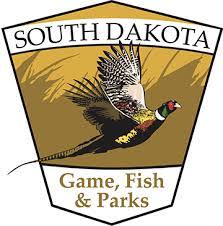RAPID CITY, S.D. (KELO) — There will be fewer non-residents hunting turkeys in the Black Hills next spring.
The South Dakota Game, Fish and Parks Commission on Thursday capped the non-resident spring licenses at 2,225.
Those licenses had been unlimited. Resident licenses will remain uncapped.
The commission’s action however likely didn’t please some of the resident hunters who spoke out earlier in the meeting.
Cody Hodson, president of Black Hills Sportsmen, said the group would like to see spring non-resident tags reduced to 1,000 and the price increased to offset the difference. He said that would create more demand for the tags.
Dana Rogers, executive director for the South Dakota Wildlife Federation, said federation members wanted a larger reduction. “This is not anything against non-residents,” he said. “It’s about this unlimited season.”
Terry Mays, the federation’s vice president and chairman of the Rapid City Wildlife Management Board, told the commission that it’s become harder to find good hunting in the Black Hills without competition. He said out-of-staters shouldn’t have an advantage and he’d like to see non-residents limited until the turkey population rebounds.
Nancy Hilding of Prairie Hills Audubon Society also called for a reduction, saying bird-watchers want to see turkeys too.
But Tom Trimble, a rancher who’s guided in the Black Hills for 38 years, opposed any further reduction in non-resident licenses. He estimated that the 3,000-plus non-residents who hunted turkeys in the Black Hills this spring took approximately 1,400 toms and that about 700 were due to what he called “resident help” such as coming home to South Dakota to hunt or using an outfitter service.
“It’s different hunting. It’s hard hunting,” Trimble said. He acknowledged that hunting pressure has increased and that bird numbers are down, but not as much as others have been saying.
Commission chair Stephanie Rissler of Vermillion asked how the turkey population would be affected by capping the non-resident permits. Wildlife program administrator Andrew Norton pointed out that adult female survival is the top factor. The spring season is limited to males.
State Wildlife Division director Tom Kirschenmann agreed. “The bottom line, this is a social issue,’ he said, explaining that weather and habitat conditions have more effect on population than killing fewer toms. “The hunting part of it is way, way less,” he said.
Rissler said that rebuilding the turkey population should be the priority. “Your answer just solidified for me where we need to move with this,” she said.
Commissioner Travis Bies of Fairburn said agreed. “I feel like our non-residents are getting blamed pretty hard for lessening our game,” he said.
In the Fairburn-Buffalo Gap area where he ranches, Bies said there were a lot of turkeys — and a lot of hunters who mostly were from South Dakota. “You know who literally pounded our turkeys? Our residents,” Bies said. “Sometimes we’re our own worst nightmare.”


